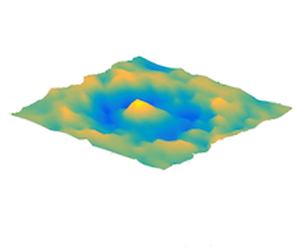Article contents
Swimming of a ludion in a stratified sea
Published online by Cambridge University Press: 24 November 2021
Abstract

We describe and model experimental results on the dynamics of a ‘ludion’ – a neutrally buoyant body – immersed in a layer of stably stratified salt water. By oscillating a piston inside a cylinder communicating with a narrow (in one of its horizontal dimensions) vessel containing the stably stratified layer of salt water, it is easy to periodically vary the hydrostatic pressure of the fluid. The ludion or Cartesian diver, initially positioned at its equilibrium height and free to move horizontally, can then oscillate vertically when forced by the pressure oscillations. Depending on the ratio of the forcing frequency to the Brunt–Väisälä frequency of the stratified fluid, the ludion can emit its own internal gravity waves that we measure by a classical particle image velocimetry technique. Our experimental results describe first the resonance of the vertical motions of the ludion when excited at different frequencies. A theoretical oscillator model is then derived taking into account added mass and added friction coefficients and its predictions are compared with the experimental data. Then, for the larger oscillation amplitudes, we observe and describe a bifurcation towards free horizontal motions. Although the internal gravity wave frequencies are affected by the Doppler shift induced by the horizontal displacement velocities, it seems that, contrary to surface waves associated with Couder walkers (Couder et al. Nature, vol. 437, 2005, p. 238) they are not the cause of the horizontal swimming. This does not, however, exclude possible interactions between the ludion and internal gravity waves and possible hydrodynamic quantum analogies to be explored in the future.
- Type
- JFM Papers
- Information
- Copyright
- © The Author(s), 2021. Published by Cambridge University Press
References
REFERENCES
- 6
- Cited by



